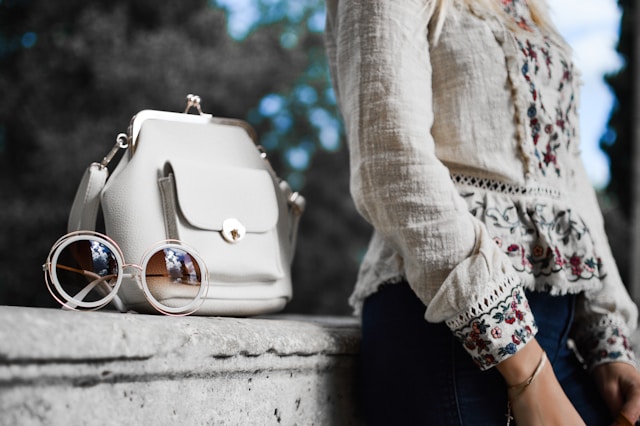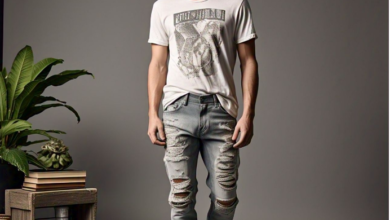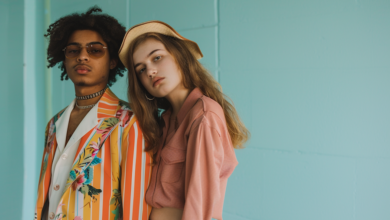Guide to Buying Good Quality Clothing Items

Wearing clothes that not only look fantastic but also feel comfy and sturdy makes one rather happy. Good clothes not only improve your appearance but also save you money over time and help to cut waste. Knowing how to choose high-quality clothing is a crucial ability that will change your wardrobe in a world overrun by rapid fashion and fads.
Realizing Fabric Composition
The spine of a garment is its fabric. You have to pay great attention to what they are composed of if you wish for something that will last. The starting point is usually natural fibers such as cotton, wool, silk, and linen. Though its quality might vary, cotton is adaptable and airy. Search for smoother, more durable, long-staple cotton cultivars like Pima or Egyptian. Conversely, wool comes in several grades; Merino and cashmere are the softest and most valuable. Blended materials provide advantages as well, particularly in cases of utility design. Combining cotton and polyester, for instance, will help to avoid shrinkage and creases. Steer clear of mixes that seem cheap or synthetic, though; they often pill and fade fast. You should also feel the cloth; it is a good gauge of quality. Usually indicating longevity, a thick, smooth feel; thin or rough fabrics frequently fade quickly.
Designer Jeans Worth the Investment
A wardrobe must; jeans are therefore worth the search for a luxury pair that fits exactly. The denim itself and how it’s made define great jeans. Usually derived from 100% cotton or a little stretch combination, premium denim is heavier and has a strong texture. Renowned for employing premium fabrics and creative washes are from top companies. Search for selvage denim, a kind of cloth spun with a neat edge to stop fraying or you can also go for black denim designer jeans. Usually, the inside seam of the jeans will reveal this feature. Another absolutely vital element is fit. From skinny-fit to relaxed designs, designer labels invest in shapes and patterns that accentuate various body types. At last, pay close attention to the last details: labels, stitching, and rivets usually reveal the degree of artistry and attention behind the jeans.
Evaluating the Weight
One unique weight and feel of quality clothes distinguishes it. Like wool coats or denim jackets, heavier Clothing Items often shows better craftsmanship and materials. Still, this does not imply every excellent item must feel weighty. Lightweight materials such as silk or fine cotton should yet feel substantial in their own right—smooth, even, and free from imperfections. To find the resilience of a garment, gently stretch it. While poorer-quality textiles may droop or lose their integrity, good-quality fabrics bounce again and maintain their form. Use your senses: an item is probably going to last if it seems opulent and strong. Conversely, it might not be worth your money if it appears fragile or scratchy.
Spot Ethical and Sustainable Practices
The fashion business is giving sustainability top attention in 2025; hence selecting ethically made clothes is a signal of real excellence. Look for companies that are open about their manufacturing techniques. Certifications showing a corporation satisfies high criteria for environmental and social responsibility include Fair Trade, GOTS (Global Organic Textile Standard), or OEKO-TEX. Companies that give sustainability priority generally make investments in ethical labor and better materials, producing clothing meant to last. In line with the idea of creating a long-lasting wardrobe, they also usually pay more attention to classic styles than to fads. Supporting these businesses helps not only to purchase nicer garments but also helps to preserve the earth.
Investing in Timeless Pieces
Your wardrobe should reflect your priorities—quality above quantity. Rather than purchasing several inexpensive pieces, concentrate on classic pieces that will anchor your clothing. Almost every ensemble may be enhanced with a custom jacket, a classic white shirt, or a pair of leather boots—never goes out of style. These basics are worth indulging in as they are adaptable and wear wonderfully over time. When looking for classic items, give clean lines and neutral colors top importance. Steer clear of ostentatious trends that might seem out of current in a year or two. Pay attention to fit: no matter how well-made, ill-fitting clothing will not benefit you. Turning a good garment into a perfect one might make all the difference depending on a competent tailor. Your wardrobe will be more efficient and fashionable if you have unlimited possibilities to mix and match from a well-chosen collection of premium essentials.
Conclusion
Developing a wardrobe of premium clothes is about making wiser, more environmentally friendly decisions than only about appearances. From knowing fibers to appreciating artistry, every action you do to wear better clothes enhances your wardrobe and savings. Therefore, keep in mind that the actual value of clothes is not only their cost but also their quality and lifetime span when you next buy.




